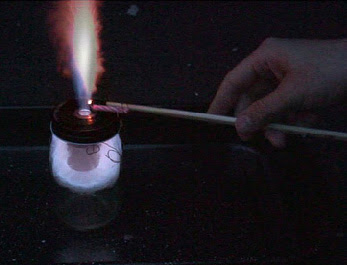Make a Jet Engine in an Hour
As most of you loyal readers are aware, one of my ongoing crusades is to transform k-12 science education from boring rote cookbook style exercises in contrived tedium into the interesting explorations they SHOULD be.
So I constantly have science teachers asking me, "...but what sort of experiments should I have the kids do, and how much would the materials cost? Those Pasco kits are just so convenient."
Yes, the pre-fab shrink-wrapped curriculum materials make it easy on the overloaded teacher, but there ensues no opportunity for student innovation or creativity. An example, you ask?
Well here is an example for any class discussing fuel, or energy, or Newton's laws of action and reaction. And it involves fire, which tends to keenly engage the teenage mind.
Yes, the pre-fab shrink-wrapped curriculum materials make it easy on the overloaded teacher, but there ensues no opportunity for student innovation or creativity. An example, you ask?
Well here is an example for any class discussing fuel, or energy, or Newton's laws of action and reaction. And it involves fire, which tends to keenly engage the teenage mind.
Have your middle or high school science students make jet engines and test them.
- Sounds dangerous? That's what protective glasses and gloves are for.
- Sounds expensive? Try almost free with a recycled jar.
- Sounds out of reach of most secondary students? Pah! Let them try and they will surprise you.
Make Magazine has a great podcast and written directions on how to make a Pulse-jet engine out of a used jam jar. The parts are very low cost to the point where each student can make their own.

Better yet, the operational principles of the pulse jet are simple enough that this project could be part of a broader series of experiments where the students figure out how to measure, and then optimize the engine thrust by varying the jar materials and shape, exit aperture position and diameter, heat exchanger configuration and so on. They could even go on to explore alternative fuel delivery methods with external tanks and combustion chambers of alternative (more stable) materials.
























No comments:
Post a Comment